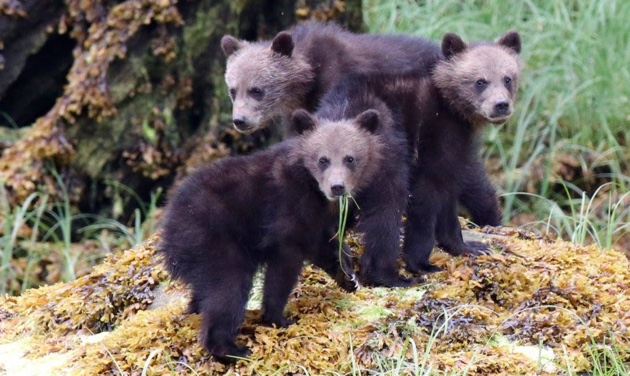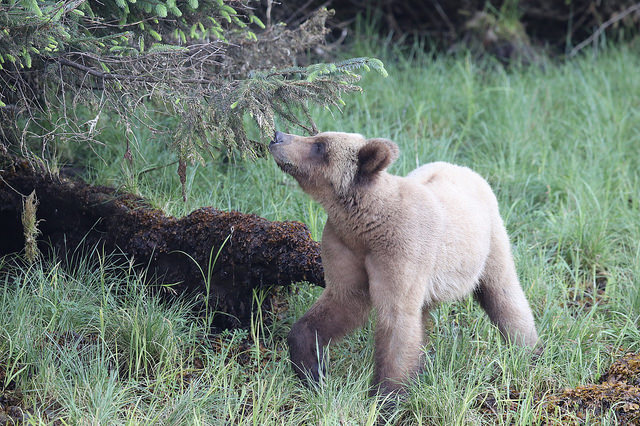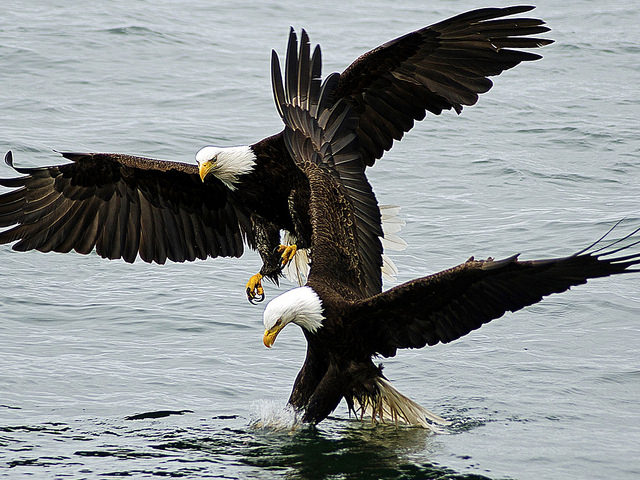Get close to Canada’s West Coast wildlife
Grizzlies, humpbacks and bald eagles captivate Prince Rupert’s visitors

Accessible from the Mainland by a short bridge, Prince Rupert is a small port city on Kaien Island; it is the largest hub of Northern British Columbia’s West Coast. The human population might be low, but the wildlife makes up for that against the land and sea backdrop of this quaint coastal town.
Prince Rupert gives tourists access to the wondrous animals of the Pacific Ocean. Humpback whales are easily spotted in August and September as they feed and prepare for their southern migration. On land, it’s resident grizzly bears that attract public attention. The Khutzeymateen Grizzly Sanctuary, Canada’s first protected grizzly habitat, is just north of Prince Rupert and accessible for viewing by boat.
Prince Rupert Adventure Tours offers day trips from town into the cold ocean water to view both the humpback whales and peaceful grizzly bears. Debbie and Doug Davis own and operate these seasonal tours. They give visitors a glimpse into Canada’s inspiring West Coast wildlife.

Tours begin in May, taking visitors to the Khutzeymateen Sanctuary. “We take people by boat on a seven-hour trip,” Debbie said. Their beautiful 72-foot catamaran can take 100 eager wildlife viewers to the Khutzeymateen, which is two hours away. “There we watch the animals—the bears—from the comfort of the boat,” she said. The bears don’t seem so scary as they roam, mate and play along the shoreline.
Viewing is silent while outside the main cabin of the catamaran so as not to disturb the bears as they emerge from hibernation. “They’re kind of like cows, so they will be feeding on sedges or digging for clams and mussels,” she said. Grizzlies mate in the spring, so Adventure Tours gives tourists a peek of the males chasing females around the shore. The cubs, however, are the main even. “Right now we are seeing moms and cubs," Debbie said. "We’ve got two new moms with three sets of cubs each.”
Visitors don’t need cameras or binoculars to see the bears from the boat. “You get close enough to hear the bears chewing on grass,” she said. “The idea is to get close enough without disturbing the bears and then to leave them doing exactly what they were doing when we approached them.” It is a sanctuary, after all.
Departure times vary based on the tide with the goal of arrival at a low tide. Along the way, cruisers might spot other animals splashing through the water. Porpoises and seals are commonly spotted throughout the spring and summer, while bald eagles flood the sky with their distinct cries.
August and September mark whale-watching season. “We concentrate on humpback whales,” Debbie said. “Those are the ones that migrate from Hawaii up into Alaska and then make their way down into this area where they feed to bulk up before they make the trip back again.”
Whale watching is unpredictable compared to grizzly viewing. “We know where they are going to be most of the time," said Debbie, "but how they are going to perform? We aren’t too sure.” The whales are so preoccupied with catching fish that they usually ignore the boat as it floats around their feeding grounds. Patience, however, almost always results in a great show. “Sometimes they come up right beside the boat,” she said.

One of the whales’ tricks is “bubbling,” a common occurrence in which the whales use their bubbles to net the fish. They swim beneath a school of wish then blow bubbles to force the fish to the surface. The whales follow the fish trapped in the bubbles and breach the water’s surface, scooping their splashing meal into their open mouths.
The 2016 season has been a success so far, with bears playing in the grass during each trip along the coast. This route is a popular choice for travellers. “It’s a trip that people book a whole year in advance,” said Debbie. “Every trip is different—it’s a super tour!”
Prince Rupert has plenty of camping in the area for those travelling with trailers and campers. The bridge from the Mainland gives easy access to the quaint coastal town and all of the wildlife it has to offer.






